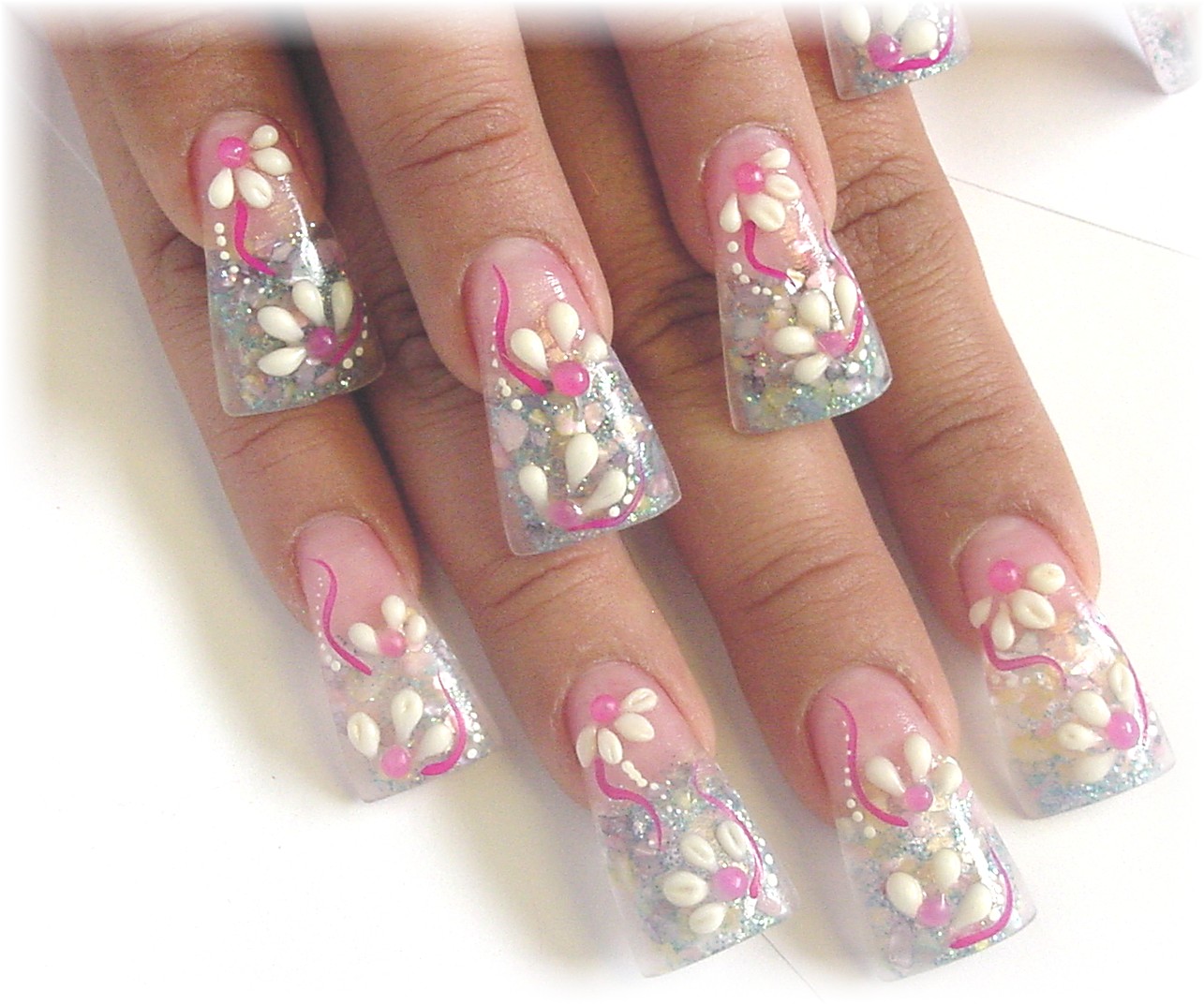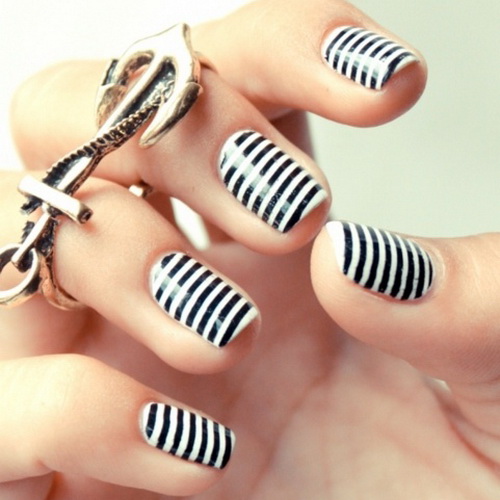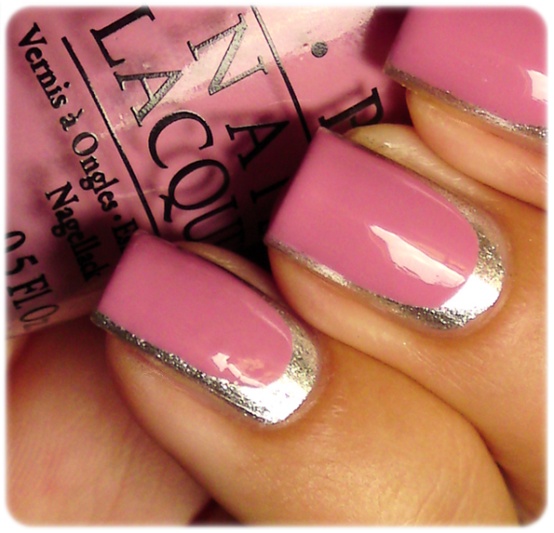Fake Nails Designs Biography
(Source google.com)
Artificial nails, also known as
fake nails, false nails, fashion nails, nail enhancements, or nail extensions,
are coverings placed over fingernails as fashion accessories. Some artificial
nails attempt to mimic the appearance of real fingernails as closely as
possible, while other designs may deliberately stray in appearance from real
fingernails. Artificial nails are made from a wide variety of materials. The
artificial nails are not a replacement, but an extension for natural nails.
There are two main approaches to creating artificial nails—tips and forms. Tips
are made of lightweight plastic plates that are "nail"-shaped. They
are glued on the end of the natural nail and acrylic is then applied over the
entire nail. Tips are now available in many different colors and designs,
ranging from simple colors such as yellow or blue to flamboyant designs such as
animal prints and mixed metallic colors. Forms are fitted over the nail and
then an artificial nail is molded out of acrylic and the form is removed and then
properly shaped and buffed to a shine. There are several popular
techniques that can be used to create longer, better-looking nail enhancements.
One popular material commonly
called "Polymethyl methacrylate acrylics" is a mixture of a polymer
powder and a liquid monomer (e.g. ethyl methacrylate). The mixture starts to
harden in 20–30 seconds after application and continues to cure to final
hardness typically within fifteen minutes. Powder and liquid acrylics can be
removed by using a variety of solvents (usually acetone is used). Usually it
takes 20 to 30 minutes to remove the nail while using a nail file to help take
off each layer of the artificial nail. Another material, commonly called
"UV Top Coat" (in correct chemical terms a polymer resin) hardens
under ultraviolet light. Depending on brand these can show a broader variety of
quality and properties (flexibility, strength, etc.) but may be more expensive.
They generally cannot be removed by organic solvents, but only be removed by
filing (or left to grow out with the natural nail). There are, however, a
variety of soak off UV gels which can be quickly and easily removed using
acetone.
Another popular alternative to
acrylic or gel preparations are fiberglass or silk wraps. They are done by
cutting pieces of actual fiberglass or silk fabric to fit on the surface of the
nail or tip and then it is sealed down with a resin or glue. These are a
possible alternative for those who are allergic to chemicals used in the
acrylic or gel process. These sort of treatments are commonly used to protect
the nails if they have been broken. The silk or fiberglass overlay acts as a
false layer of nail and thus protects the nail plate from splitting or becoming
damaged any further. Other materials can be used, as
well as combinations of them. There are also temporary, cheaper flexible tips
that can be quickly glued at home without help from a professional. Acrylic nail powders are
available in a variety of colours and can use "special effects" such
as contours, sparkles and the very popular French manicure (pink or tan and
white appearance). Acrylic nails help conceal or fix
broken, damaged, short, or bad nails. It also helps prevent people from biting
their nails, breakage of nails, and protect splits. They are used when people
are not able to grow the length and strength of natural nails that they desire.
This problem can be solved by using certain nail techniques such as nail
tipping, sculptured nails, nail wrapping, or acrylic overlays. However Acrylic
nails usually make natural nails weak, thin, and breakable when removed. If fitted properly, artificial
nails are usually not problematic. However long term use and poorly fitted
nails can seriously damage the nail bed and hamper natural nail growth.
The
most common problem associated with artificial nails is a bacterial infection
that may develop between the false and natural nail. When artificial nails are applied
to the natural nail surface, minor types of trauma to the artificial nails
which can happen from something as harmless as scraping a nail against a firm
surface can cause separation of the nail from its nail bed. This allows
bacteria and fungus to potentially enter the separated area setting up an
infection. In fact, some hospitals won't allow their employees to have fake
fingernails due to the risk of harboring infection which could be transmitted
to patients. Several deaths of premature infants were blamed on an acrylic nail
infection transmitted to the babies by a nurse in the late 1990s. Infection can
also be a risk when you have nails applied by a disreputable nail salon that
doesn't follow sanitary practices. There is concern over the
flammability of ingredients used to make acrylic nails. It is suggested that
they be kept at a distance from hair straighteners, dryers or curling irons, as
well as from heat and flames when cooking, in order to avoid potential flame
hazards. In an occupational health
standpoint, there could be hazards to nail salon workers who are exposed to the
chemical fumes from artificial nails, during their entire work shift. Though
the usage of methyl methacrylate has been outlawed, ethyl methacrylate is
continued to be used for artificial nails, and can cause contact dermatitis,
asthma, and allergies in the eyes and nose. Nail salon workers also face
exposures to other chemicals used, such as toluene, dibutyl phthalate, and
formaldehyde.
Fake Nails Designs Nail Designs 2014 Tumblr Step By Step For Short Nails With Rhinestones With Bows Tumblr Acrylic Summber Ideas

Fake Nails Designs Nail Designs 2014 Tumblr Step By Step For Short Nails With Rhinestones With Bows Tumblr Acrylic Summber Ideas

Fake Nails Designs Nail Designs 2014 Tumblr Step By Step For Short Nails With Rhinestones With Bows Tumblr Acrylic Summber Ideas

Fake Nails Designs Nail Designs 2014 Tumblr Step By Step For Short Nails With Rhinestones With Bows Tumblr Acrylic Summber Ideas

Fake Nails Designs Nail Designs 2014 Tumblr Step By Step For Short Nails With Rhinestones With Bows Tumblr Acrylic Summber Ideas
Fake Nails Designs Nail Designs 2014 Tumblr Step By Step For Short Nails With Rhinestones With Bows Tumblr Acrylic Summber Ideas

Fake Nails Designs Nail Designs 2014 Tumblr Step By Step For Short Nails With Rhinestones With Bows Tumblr Acrylic Summber Ideas

Fake Nails Designs Nail Designs 2014 Tumblr Step By Step For Short Nails With Rhinestones With Bows Tumblr Acrylic Summber Ideas

Fake Nails Designs Nail Designs 2014 Tumblr Step By Step For Short Nails With Rhinestones With Bows Tumblr Acrylic Summber Ideas

Fake Nails Designs Nail Designs 2014 Tumblr Step By Step For Short Nails With Rhinestones With Bows Tumblr Acrylic Summber Ideas

Fake Nails Designs Nail Designs 2014 Tumblr Step By Step For Short Nails With Rhinestones With Bows Tumblr Acrylic Summber Ideas

Fake Nails Designs Nail Designs 2014 Tumblr Step By Step For Short Nails With Rhinestones With Bows Tumblr Acrylic Summber Ideas

Fake Nails Designs Nail Designs 2014 Tumblr Step By Step For Short Nails With Rhinestones With Bows Tumblr Acrylic Summber Ideas

Fake Nails Designs Nail Designs 2014 Tumblr Step By Step For Short Nails With Rhinestones With Bows Tumblr Acrylic Summber Ideas

No comments:
Post a Comment